Saucer Magnolia
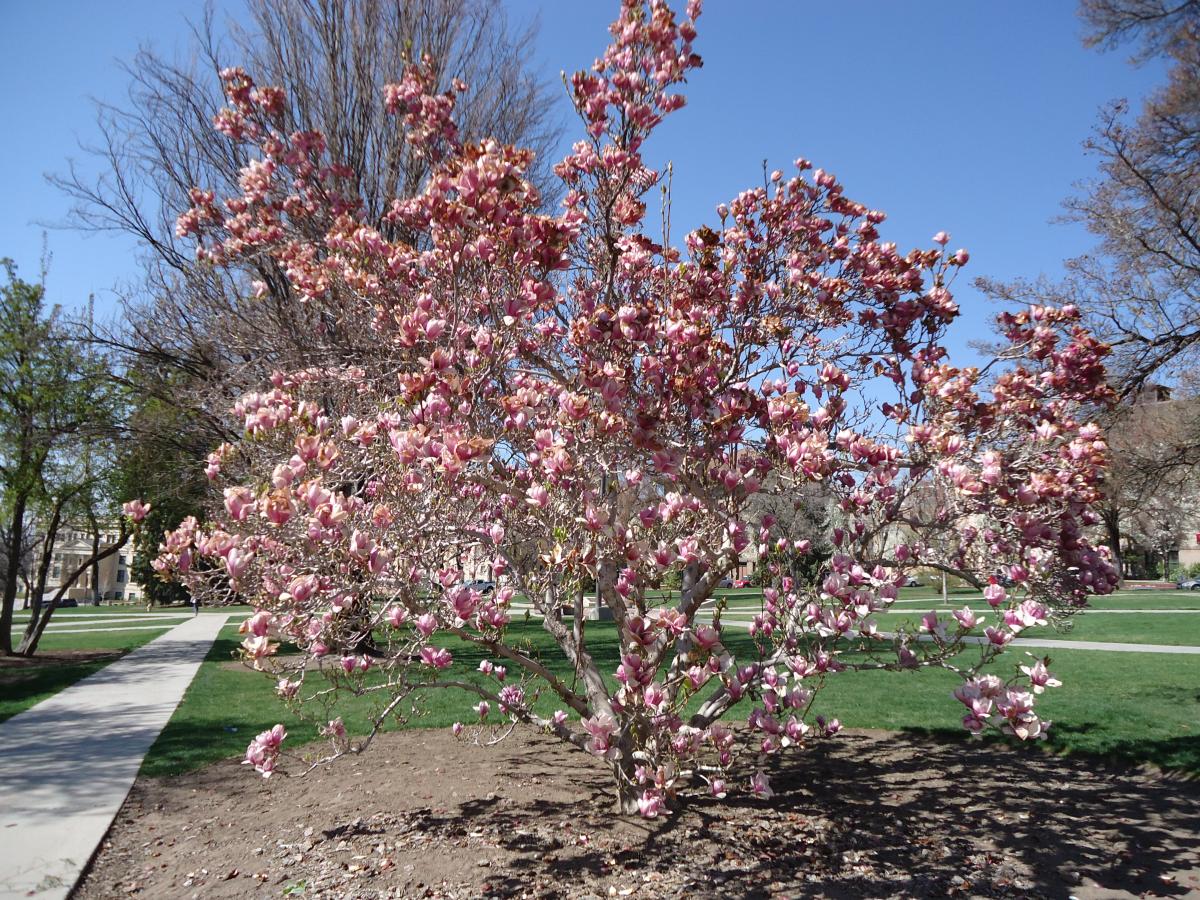
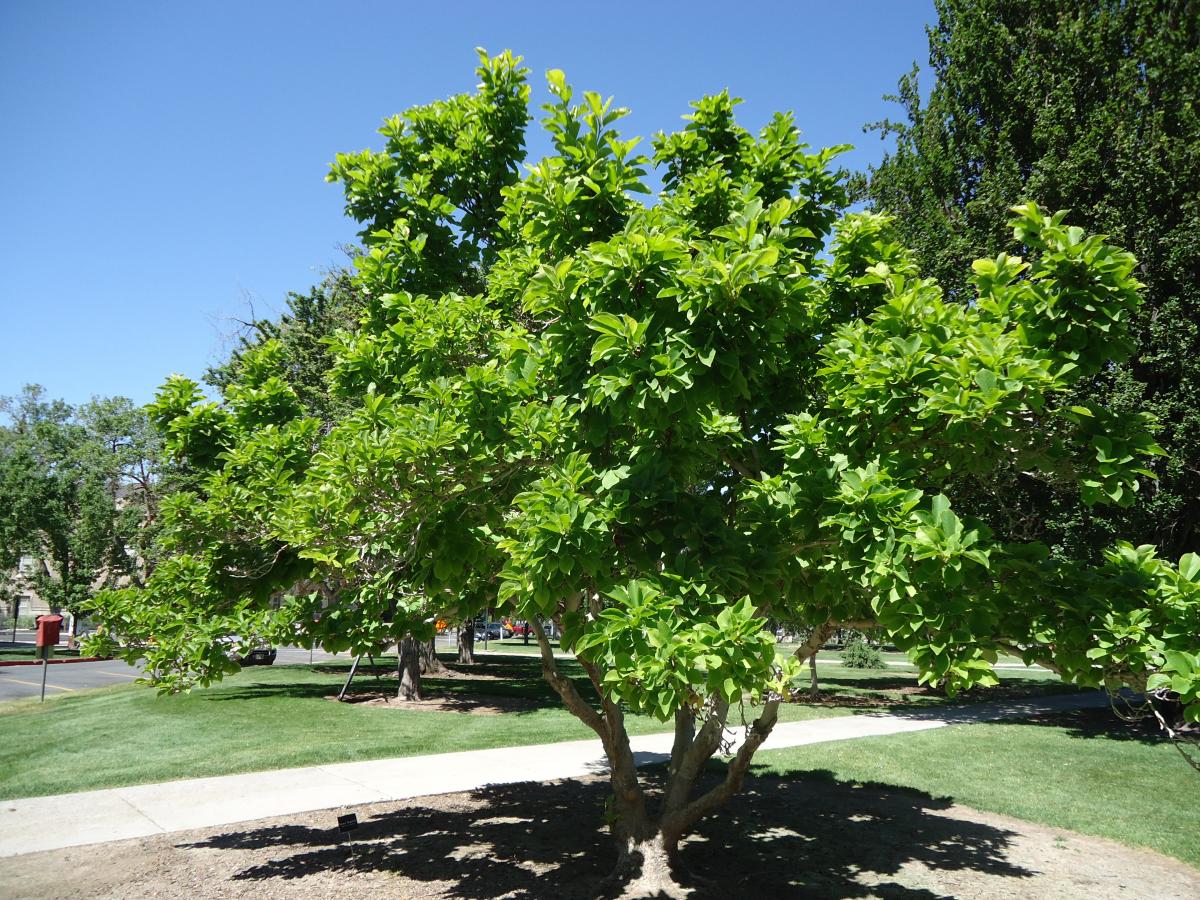
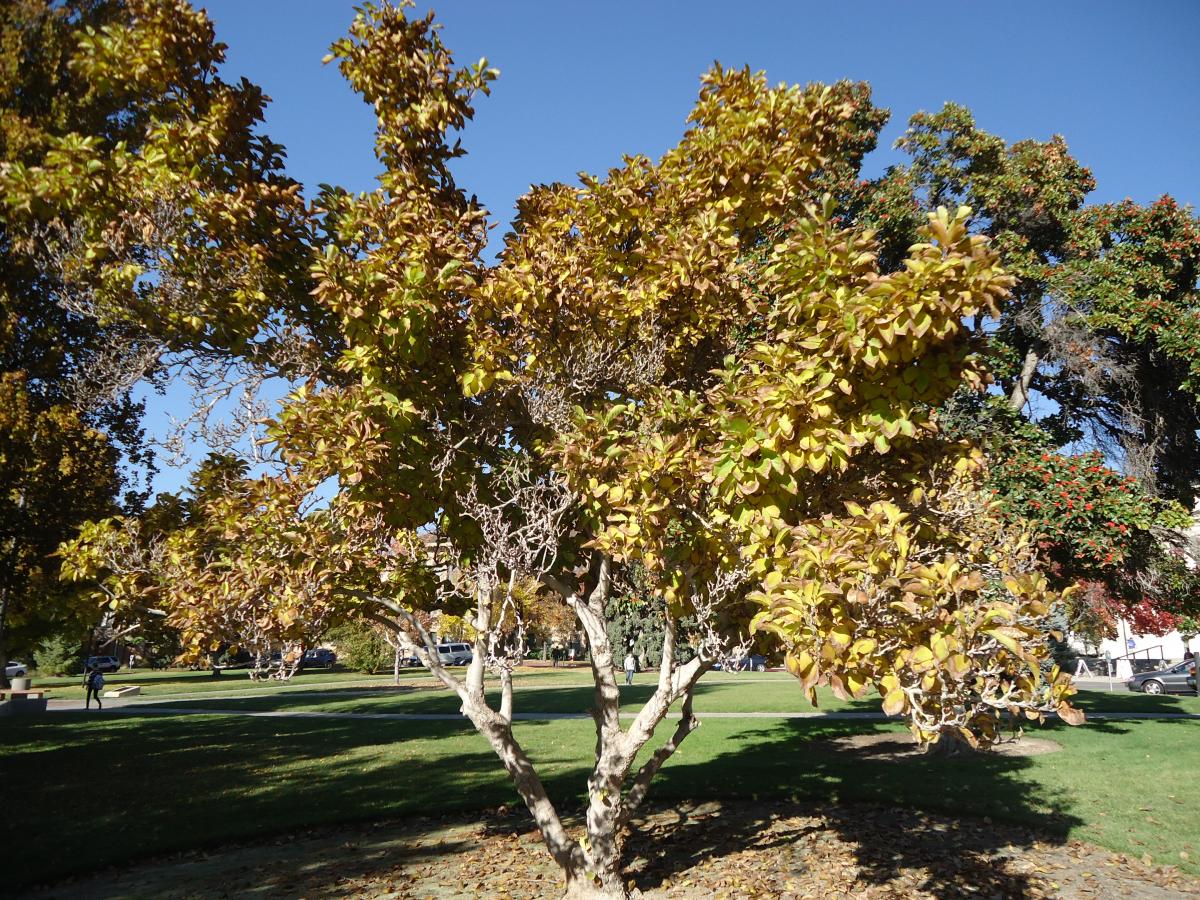
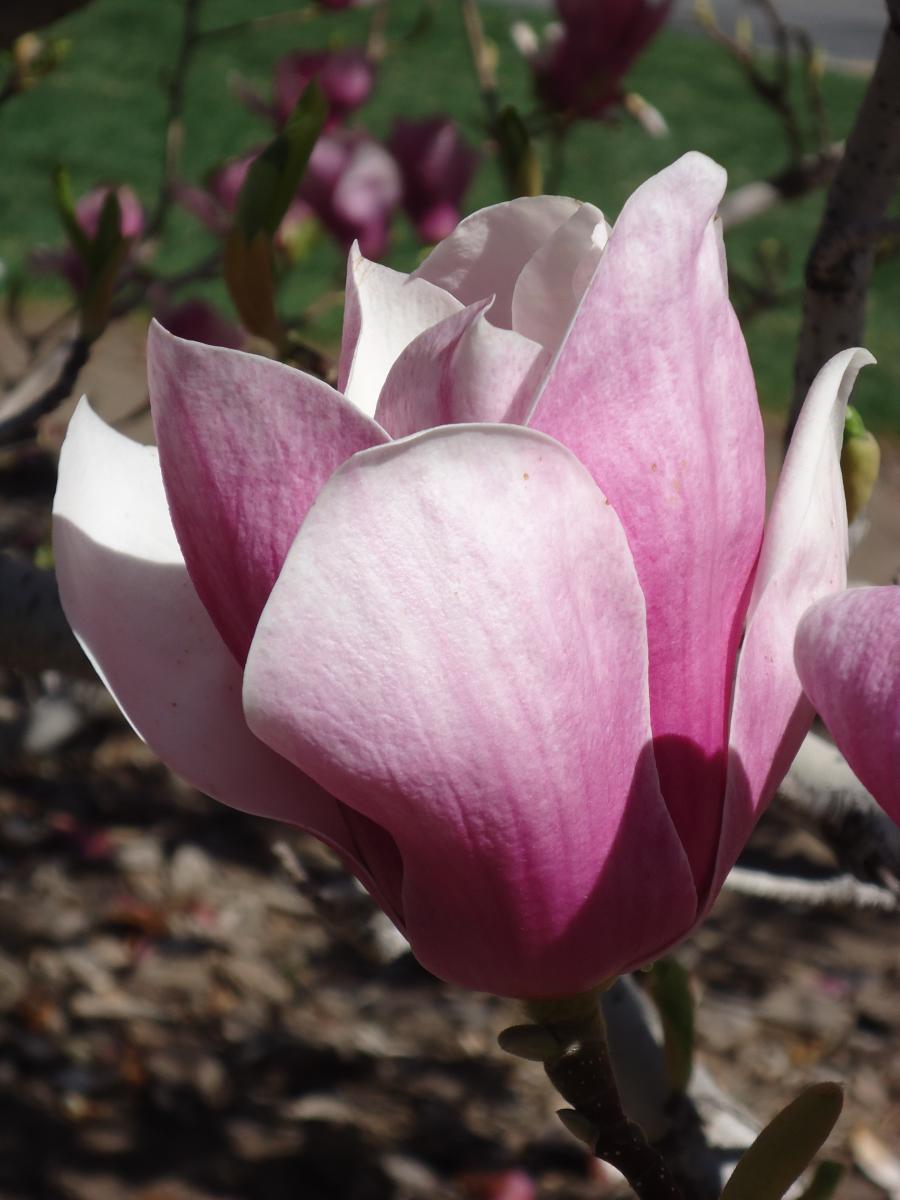
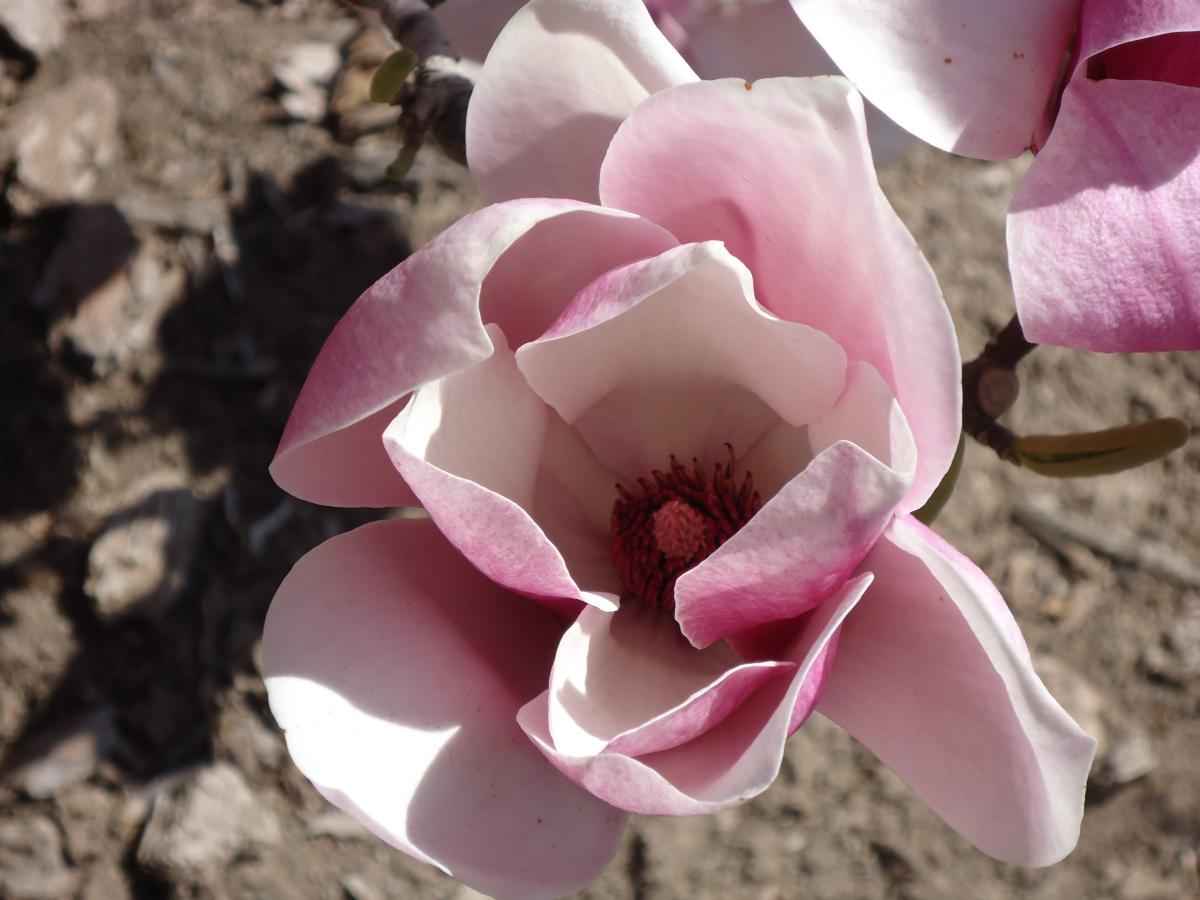
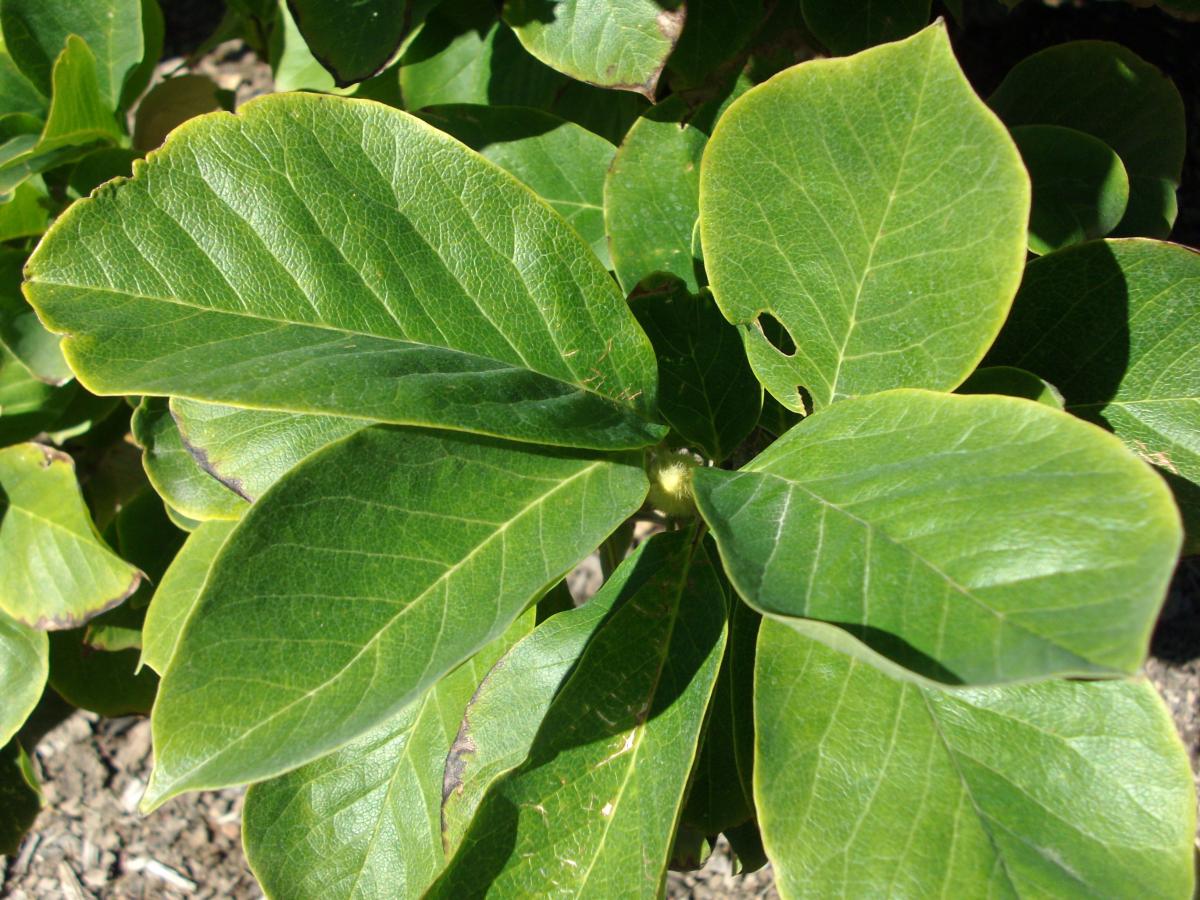
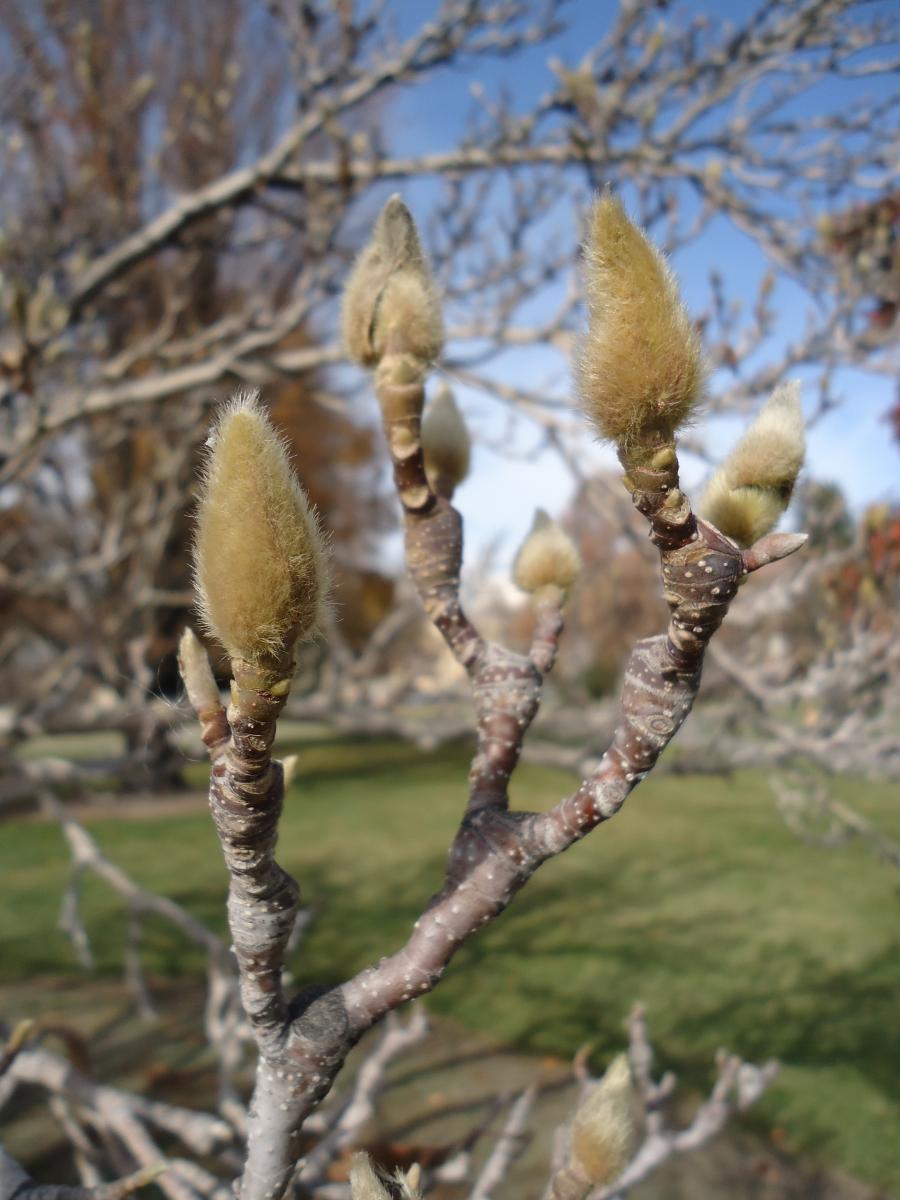

Magnolia x soulangeana
Leaves: Deciduous. Leaves are 3 to 6 inches long, ½ as wide, oval shaped and pointed. Leaves are broadest towards the tip and rounded except for the point which sticks out abruptly. Medium to dark green color. Fall color is often a yellow-brown.
Bark/Twigs: Smooth gray bark. Distinctive large hairy buds.
Flowers/Fruit: Flowers are large, 4 to 10 inches across and vary in color from white to pink to light purple. The outside of the flower is often darker than the inside. Blooms in early spring (March to April) before the leaves emerge.
Mature size and shape: Small. 20 to 30 feet high with a variety of widths. Low-branching with an overall pyramidal or rounded shape. Often grown as a multi-stemmed, small tree or large shrub.
General information/special features: Plant in full sun to part shade. Moist, rich, slightly acidic soil preferred. Will tolerate some pollution. Because they bloom so early, they are vulnerable to damage by late spring frosts.
Landscape use and maintenance: Good specimen tree as a focal point. Average growing rate. Average maintenance. Magnolias have fleshy roots, so be careful when transplanting. Prune after flowering.
USDA Hardiness Zone: 5 to 9
Family/Origin: Magnoliaceae – Magnolia. A hybrid magnolia between Magnolia denudata and Magnolia liliiflora. First cultivated in 1826.
Campus Use: Somewhat common. Can be found in President's Circle and south of the main entrance of Kingsbury Hall (Bld 4).
